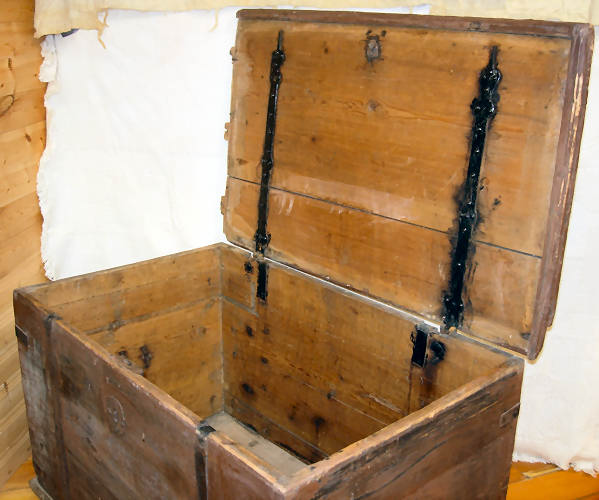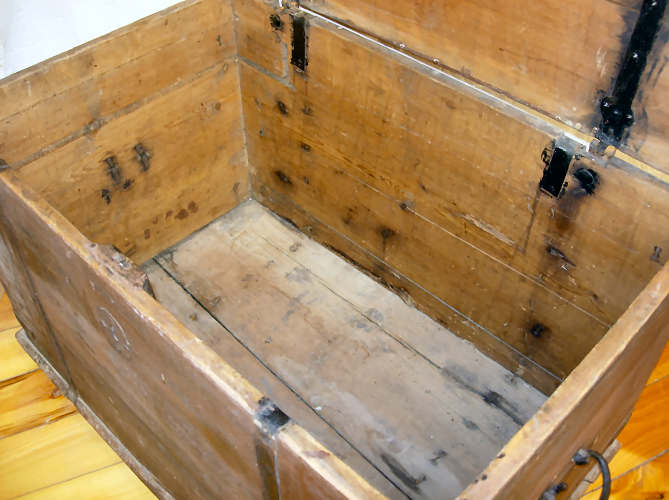

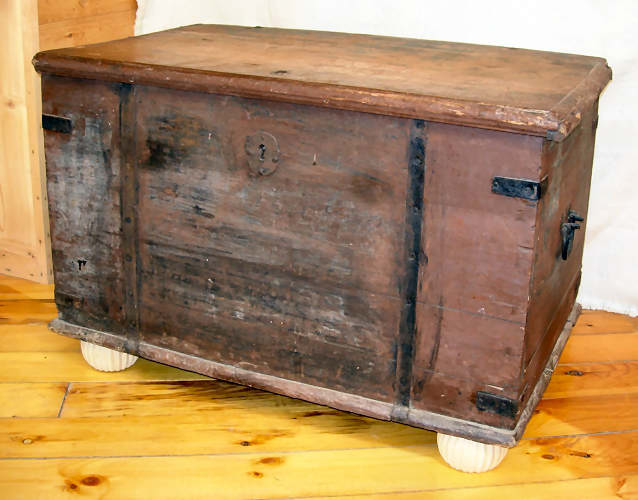
| This trunk was constructed to be used in a house. It could have withstood transport from one place to another without incurring too much damage (as its passage through time has shown), but unlike the previous exhibit, it was not intended primarily for travel. In fact, the top lid is flat and is not reinforced in any way, inside or out. And please note that the ball feet are recent additions. |
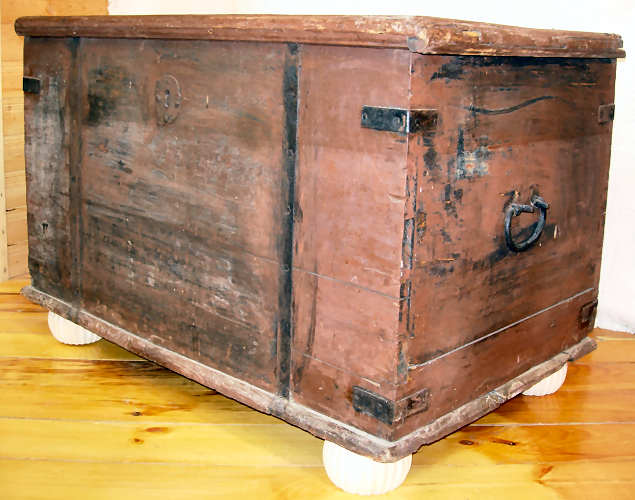
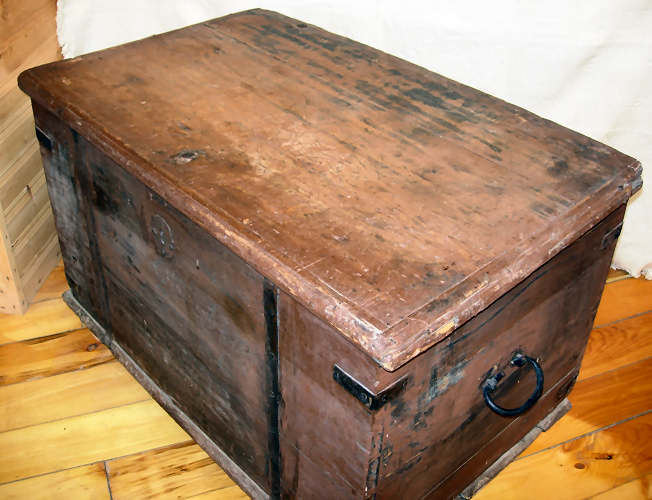
| The trunk is not completely encircled by iron straps, although they do encompass three surfaces: the back, bottom and front. As the image below shows, the straps start it the back and wrap around the trunk underneath and up the front. You can also see that the straps are not part of the hinges, but that the long hinge leaves are positioned alongside the straps. |

| As with the previous exhibit, the handles of this trunk / chest were shaped with the ends bent at ninety degrees to the trunk surface when hanging, so that the person(s) lifting the trunk would not hurt their hands. The bent ends of the handle prevent the handle from being raised at an angle greater than 90 degrees from the surface. There is evidence, as shown in the image below, that the weight of the trunk and what it held at one time was heavy enough to cause indentations where the bent ends of the handles made contact with the wood, in the act of lifting the trunk by the handles. |
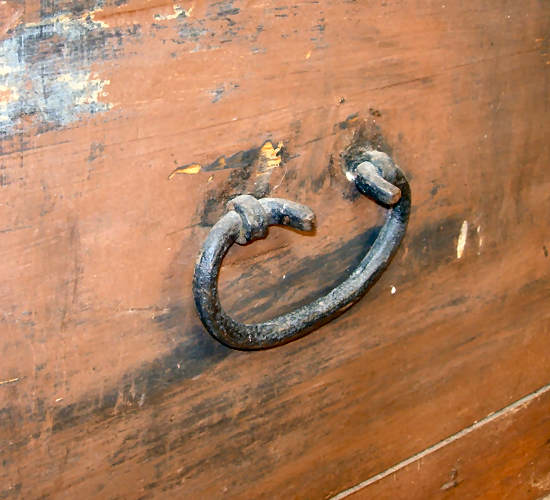
| The next images reveal the interior of the trunk. It is immediately noticed that there are two long hinge leaves on the inside surface of the lid. They connect to the outside back of the trunk. Apparently the maker of the trunk wanted the structural support that the long hinge leaves provided, but did not want them to be seen on the top surface of the trunk. |
